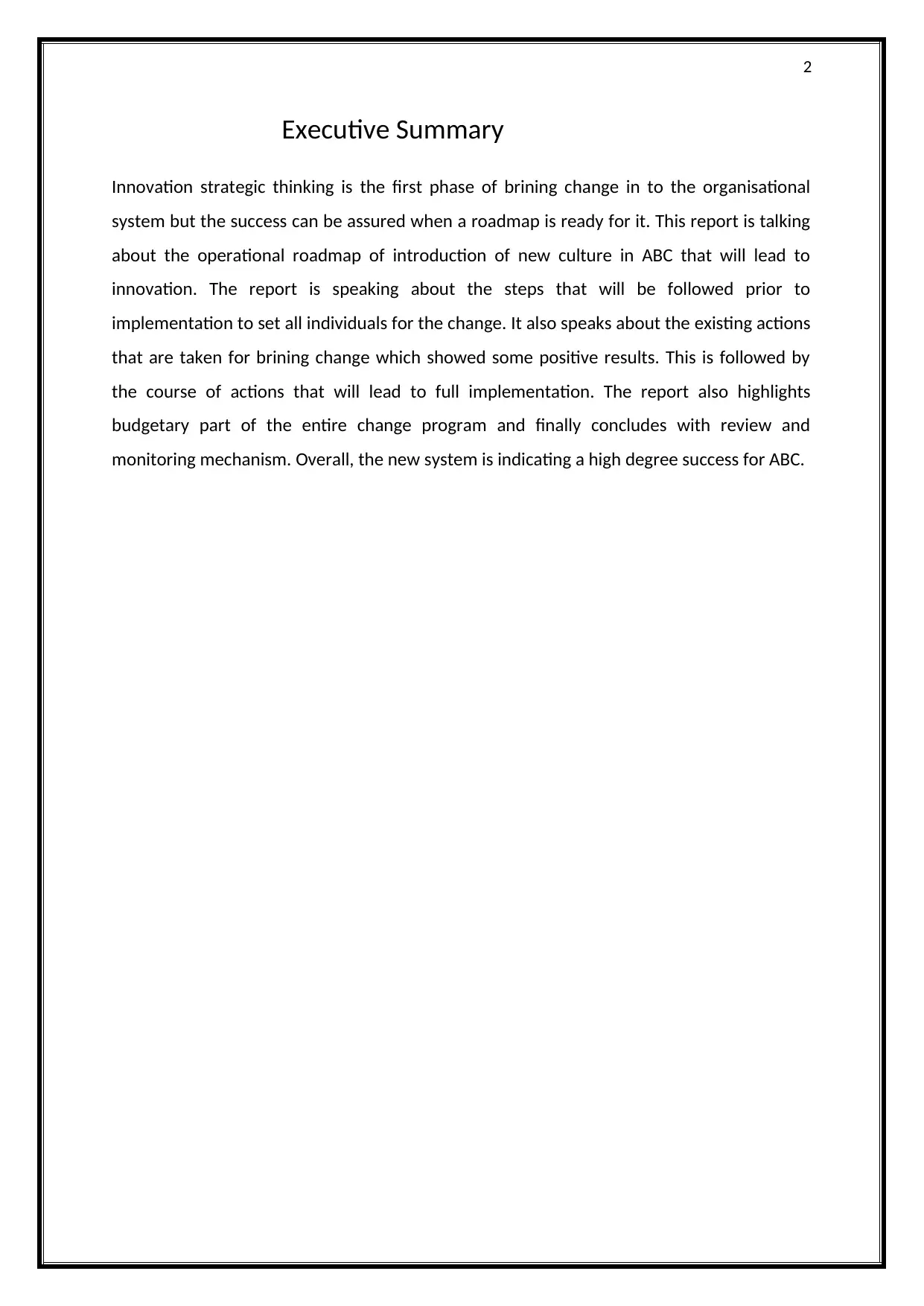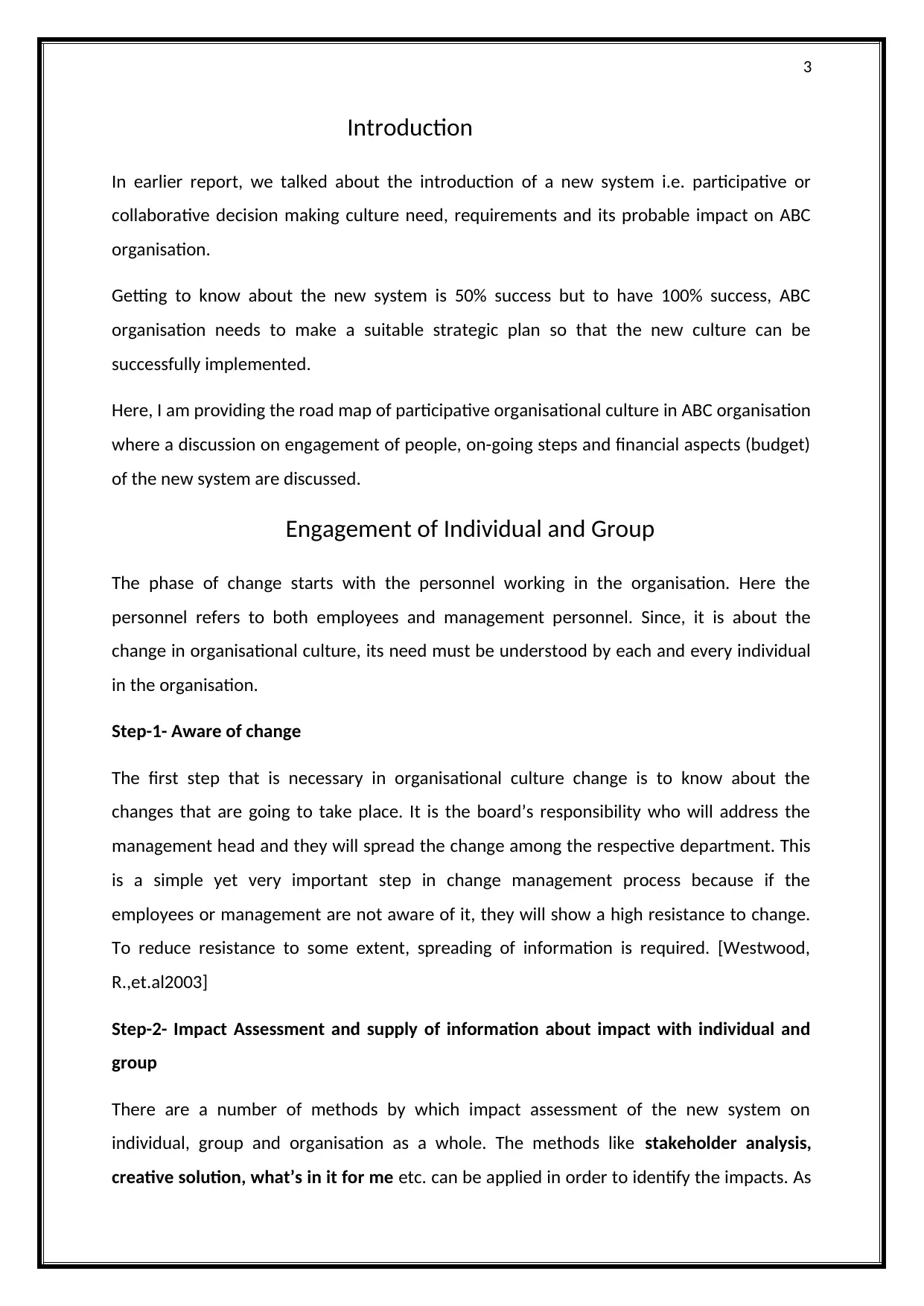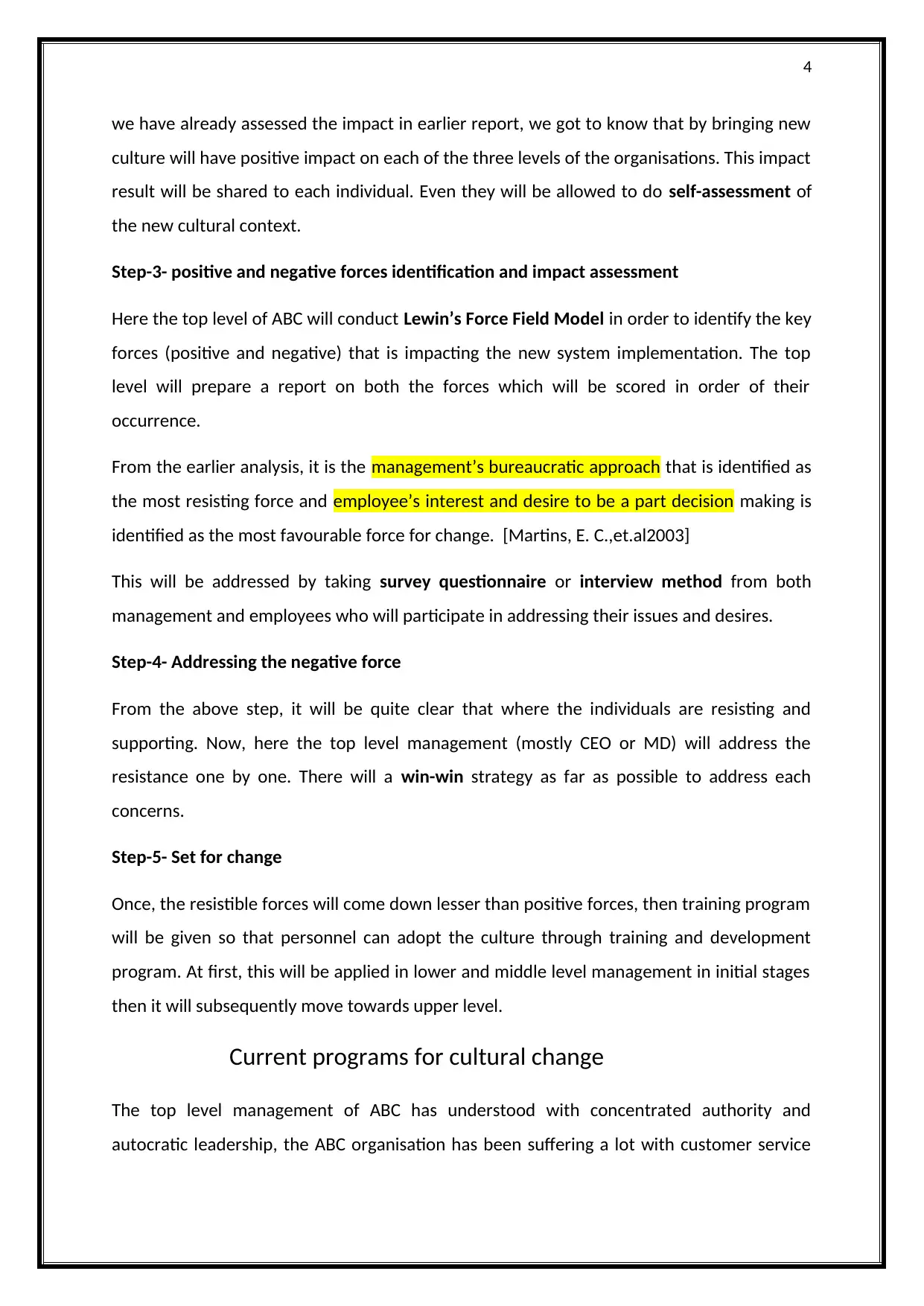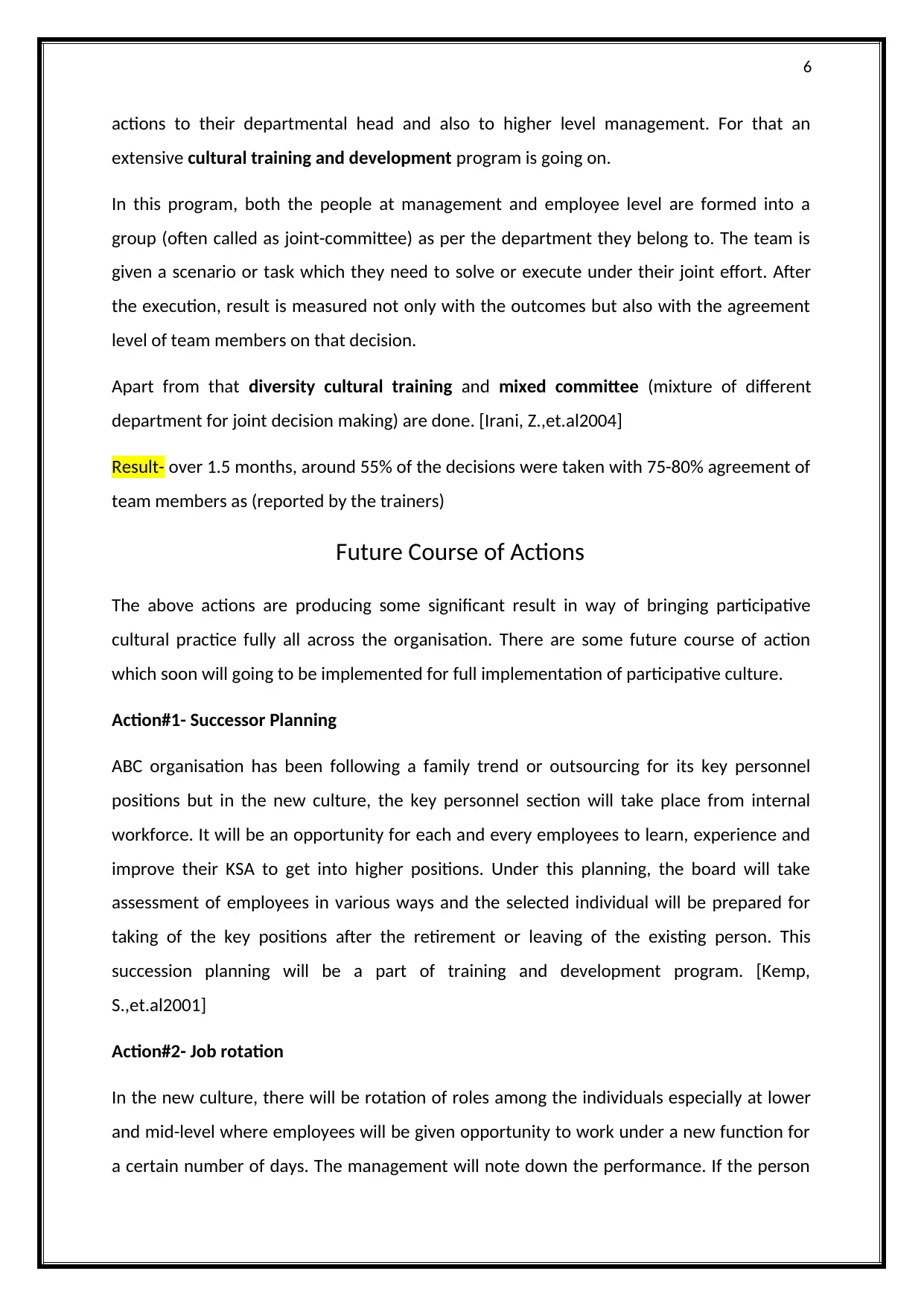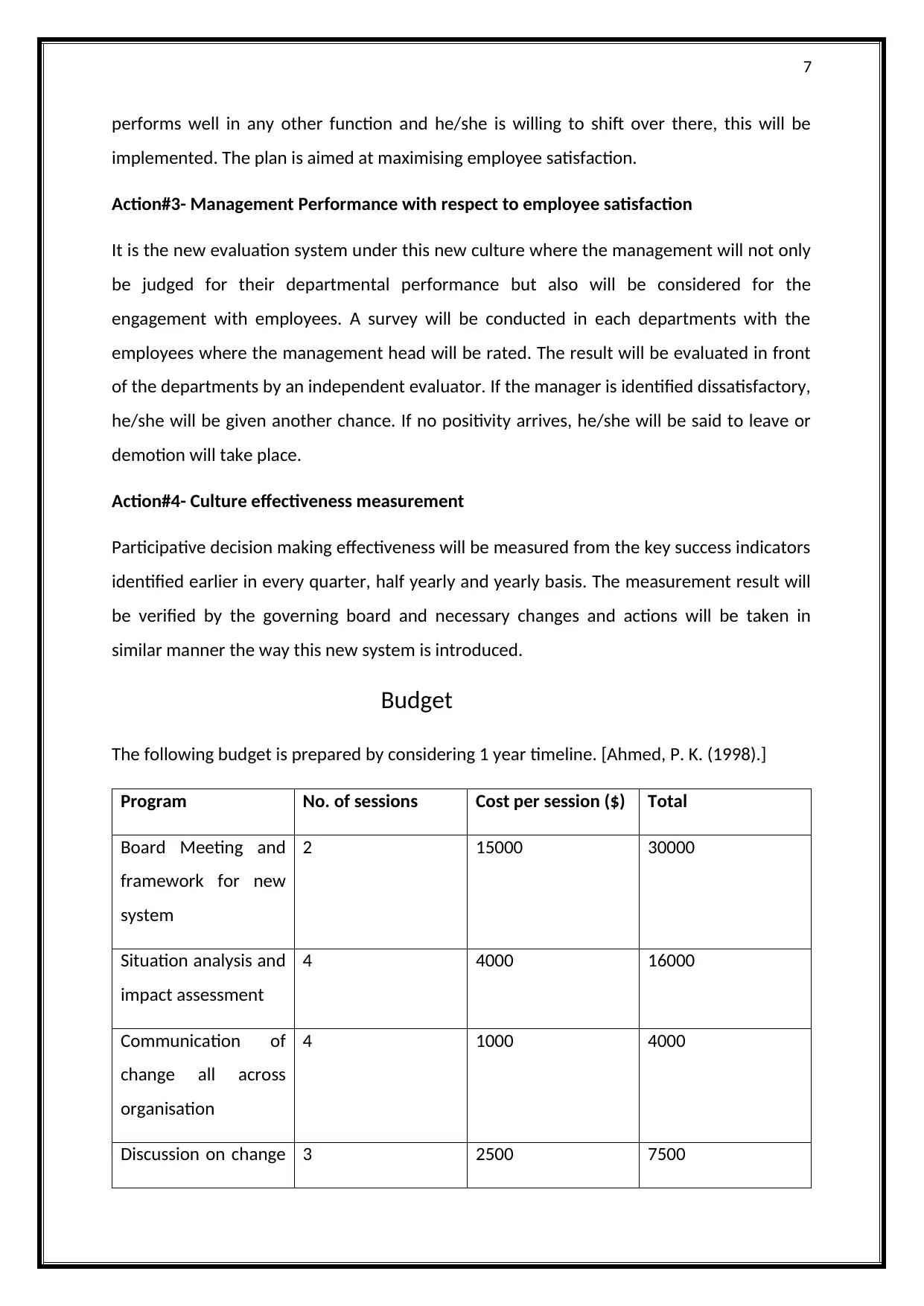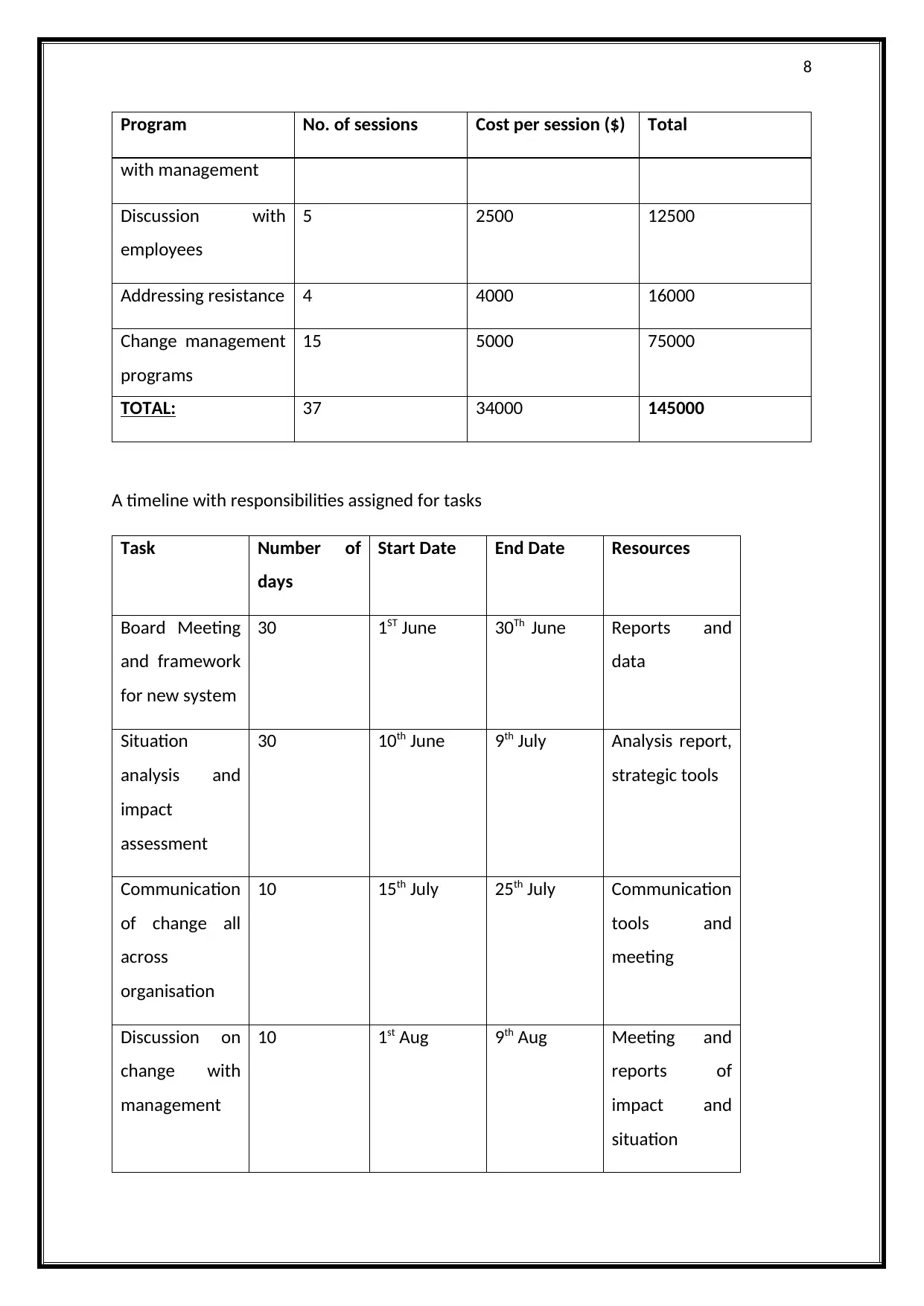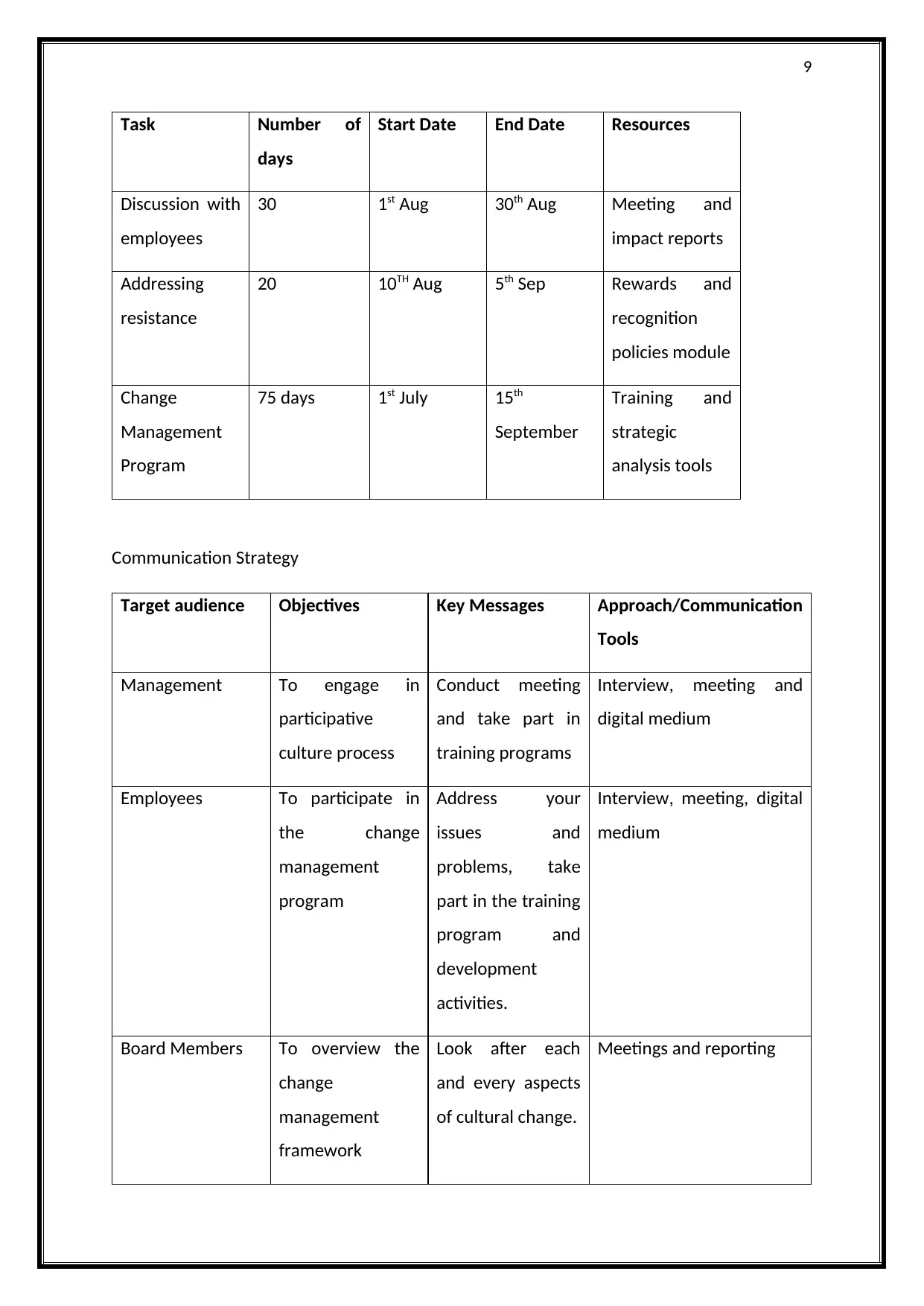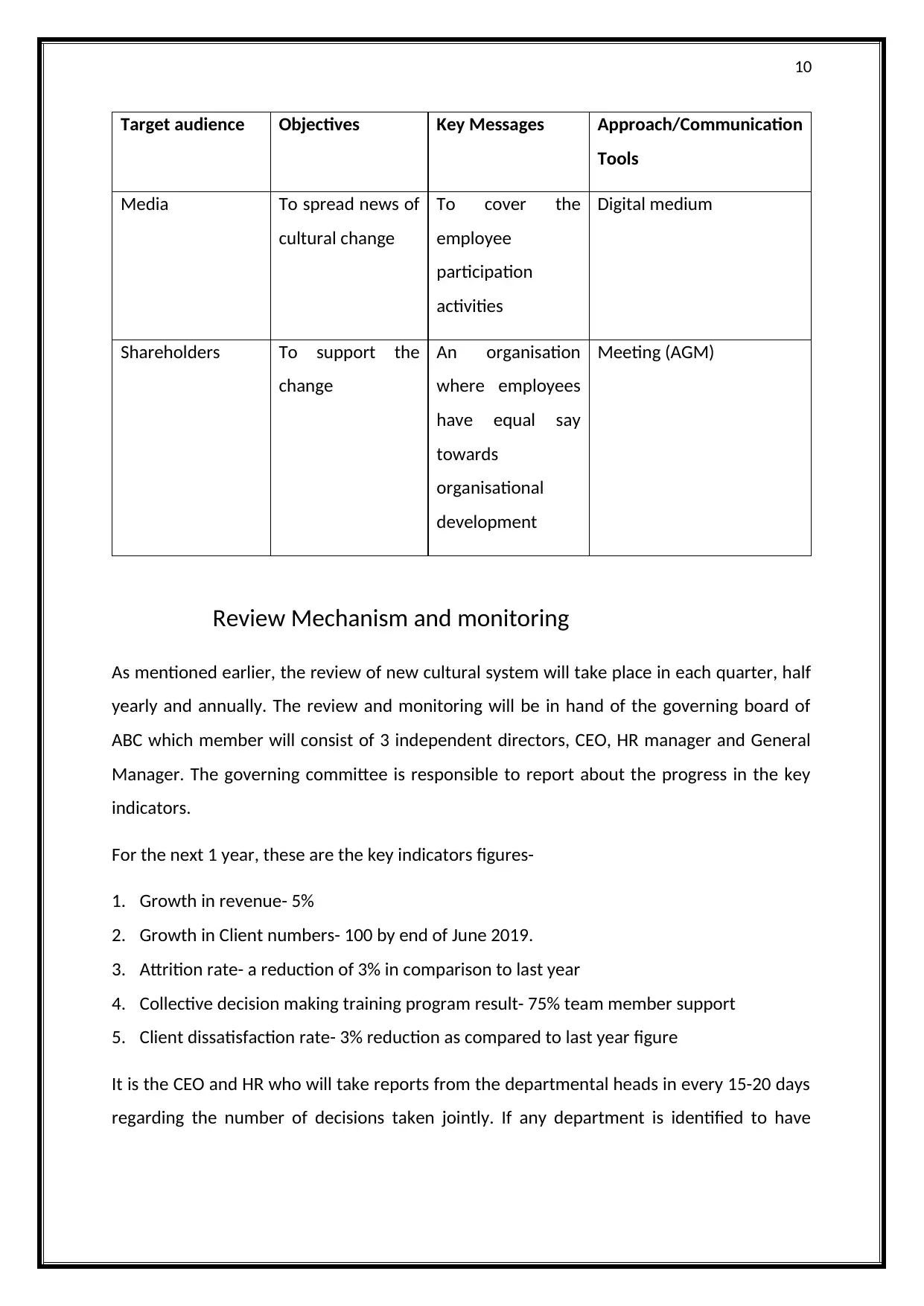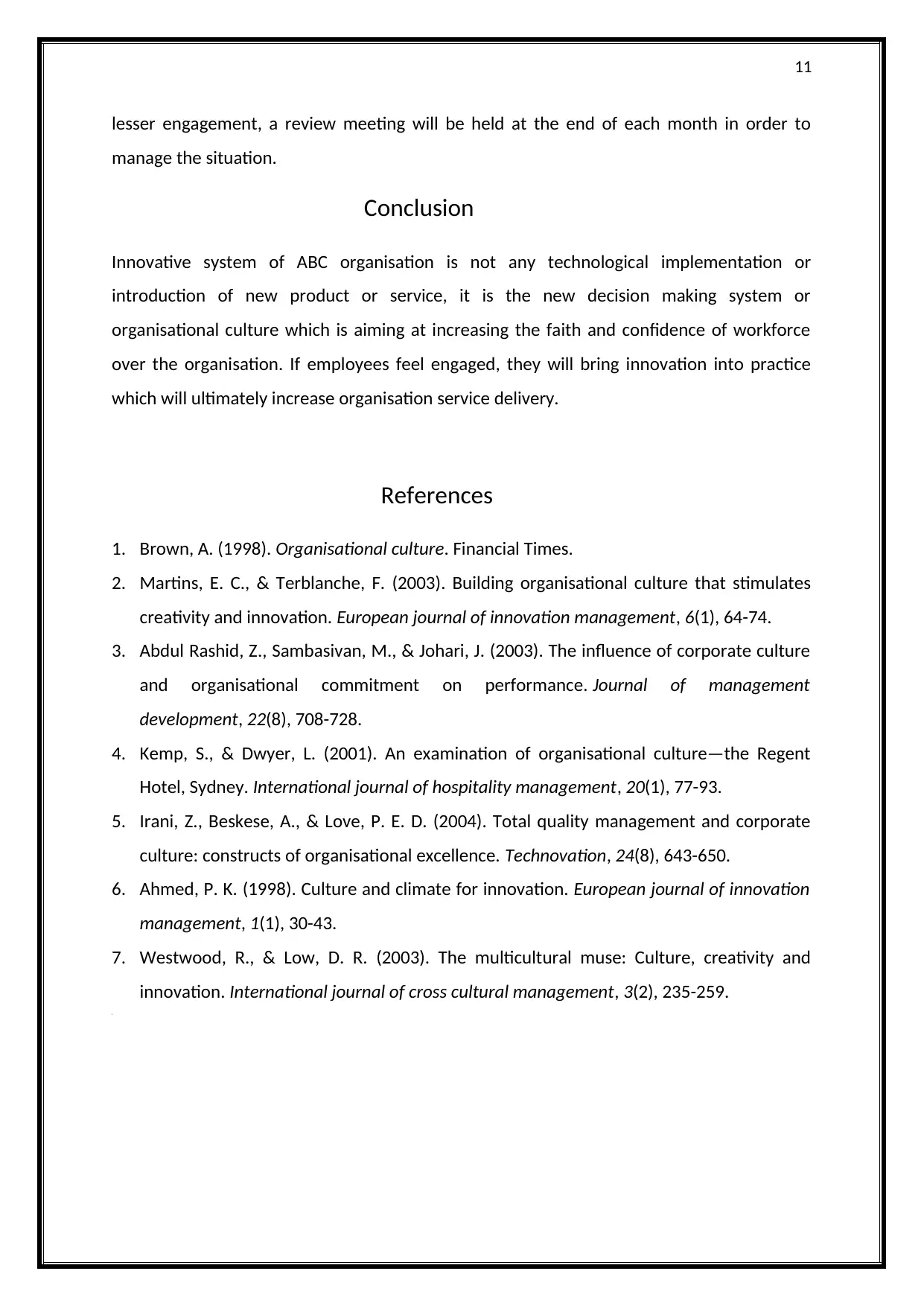The assignment content is about implementing a new organisational culture at ABC organization. The goal is to increase employee engagement and participation in decision-making processes. To achieve this, a participative decision-making system will be introduced, which will be measured quarterly, semi-annually, and annually. The management head will be rated by an independent evaluator based on the outcome of the survey conducted among employees. If the manager is deemed dissatisfactory, they will be given another chance to improve; if not, they may face demotion or termination. Additionally, a budget has been prepared for the 1-year timeline and includes various activities such as board meetings, communication, training, and change management programs.
![[object Object]](/_next/static/media/star-bottom.7253800d.svg)
![[object Object]](/_next/static/media/star-bottom.7253800d.svg)

